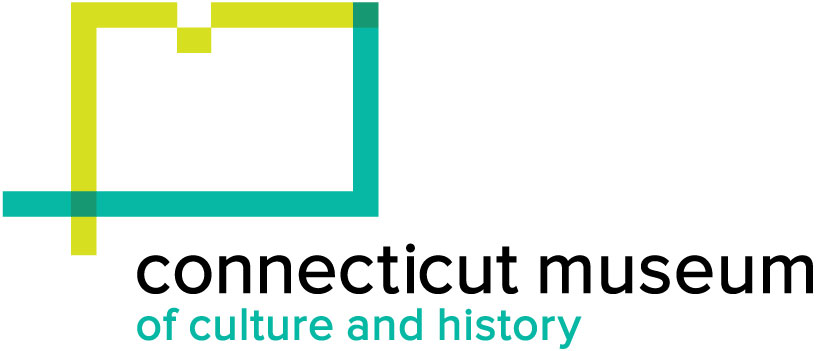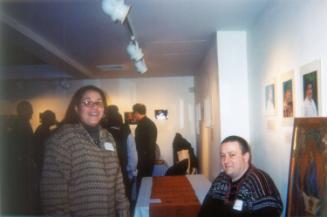Portuguese Fandango Performance & SNEAP Gathering of Artists, 2004
PerformerPerformed by
Joao dos Santos
(Portuguese)
Subject
Brian Hall
Subject
Eldrid Arntzen
Subject
Graciela Quiñones-Rodriguez
(Puerto Rican)
Subject
Seija Floderus
Subject
Marek Czarnecki
(Polish-American)
PerformerPerformed by
Sarkis Shahrigian
(1928 - 2012)
PerformerPerformed by
William Cumpiano
(Puerto Rican)
PerformerPerformed by
Danzas Peruanas
(Peruvian, founded 2002)
PerformerPerformed by
John Monteiro
(Cape Verdean)
PerformerPerformed by
Eurico Semedo
(Cape Verdean)
PerformerPerformed by
Warm Heart
PerformerPerformed by
William Hare
PerformerPerformed by
Somaly Hay
(Cambodian, 1959 - 2016)
PerformerPerformed by
Teresa Stagnaro
PerformerPerformed by
Rosaire LeHoux
(Canadian, 1920 - 2013)
PerformerPerformed by
Bob Livingston
RecorderRecorded by
Winifred Lambrecht
(American)
Date2004
Mediumreformatted digital file from VHS tape
DimensionsDuration: 22 Minutes, 30 Seconds
ClassificationsGraphics
Credit LineConnecticut Cultural Heritage Arts Program collections
CopyrightIn Copyright
Object number2015.196.856a-b
DescriptionVHS tape recording of a Portuguese fandango performance and a Southern New England Apprenticeship Program artist gathering at the Institute for Community Research.
The first part of the video (ends 2:07) is a Portuguese fandango performance by Joao dos Santos - Portuguese fandango from Ribetejo, performed by Joao dos Santos (left), who learned this dance from Joaquim Duarte in Hartford, and Danny Soares. Portuguese Club, Hartford, March 2004
The second part of the video (begins 2:49) features Southern New England Apprenticeship Program participants at the first program gathering on February 21, 2004, at the Institute for Community Research.
Works made by the featured artists include:
1. Walter Scadden and Brian Hall - blacksmithing
2. Eldrid Arntzen - Norwegian rosemaling
3. William Cumpiano and Graciela Quiñones-Rodriguez - Puerto Rican cuatro making
4. Seija Floderus, Anita Smiley, Eva Bean, and Ritva Langlois - Finnish weaving
5. Marek Czarnecki - Byzantine iconography
Performances by the featured artists include:
1. Jimmy Shahrigian, oud player and William Cumpiano, cuatro player
2. Gloria Martenson and Danzas Peruanas - Peruvian dance
3. Jimmy Shahrigian - Armenian kamancha playing
4. Joao Cerilo Monteiro, Eurico Semedo, and Warm Heart - Cape Verdean music from Santiago
5. William Hare - Irish flute playing
6. Somaly Hay - Cambodian classical dancer
7. Second Baptist Male Chorus - African American traditional gospel hymns and spirituals
8. Teresa Stagnaro - Afro-Peruvian dance
9. Rosaire LeHoux - Franco-American fiddling
10. Bob Livingston - Eastern singing style for square dance calling
NotesBiographical Note: Joao dos Santos was born in the Portuguese village of Mir de Aire in Ribetejo, the province east of Lisbon which is the center of Portuguese bullfighting. He has been a musician playing the ret ret, a scraped wooden stick, with the Hartford-area dance group Rancho Folclorico do Clube Portugues de Hartford, and served as ensaiador, the dance instructor, in the late 1990s and early 2000s. Joao's specialty is fandango, which he learned from an older Ribatejano living in Hartford, Joachim Duarte. This dance done by two men facing each other while they swing long sticks under the other's feet, displays a contest of virility between cattle herders as they fight over a woman. Rarely performed by local folk dance groups in public in North America because of its difficulty, the fandango is also danced at weddings where its meaning can be eloquently expressed as part of the celebration. Joao taught fandango to two apprentices from the Ludlow, Massachusetts Portuguese folk dance group in Year 7 of the Southern New England Traditional Arts Apprenticeship Program from 2004-2005.The first part of the video (ends 2:07) is a Portuguese fandango performance by Joao dos Santos - Portuguese fandango from Ribetejo, performed by Joao dos Santos (left), who learned this dance from Joaquim Duarte in Hartford, and Danny Soares. Portuguese Club, Hartford, March 2004
The second part of the video (begins 2:49) features Southern New England Apprenticeship Program participants at the first program gathering on February 21, 2004, at the Institute for Community Research.
Works made by the featured artists include:
1. Walter Scadden and Brian Hall - blacksmithing
2. Eldrid Arntzen - Norwegian rosemaling
3. William Cumpiano and Graciela Quiñones-Rodriguez - Puerto Rican cuatro making
4. Seija Floderus, Anita Smiley, Eva Bean, and Ritva Langlois - Finnish weaving
5. Marek Czarnecki - Byzantine iconography
Performances by the featured artists include:
1. Jimmy Shahrigian, oud player and William Cumpiano, cuatro player
2. Gloria Martenson and Danzas Peruanas - Peruvian dance
3. Jimmy Shahrigian - Armenian kamancha playing
4. Joao Cerilo Monteiro, Eurico Semedo, and Warm Heart - Cape Verdean music from Santiago
5. William Hare - Irish flute playing
6. Somaly Hay - Cambodian classical dancer
7. Second Baptist Male Chorus - African American traditional gospel hymns and spirituals
8. Teresa Stagnaro - Afro-Peruvian dance
9. Rosaire LeHoux - Franco-American fiddling
10. Bob Livingston - Eastern singing style for square dance calling
Subject Note: As part of its NEA-funded Southern New England Traditional Arts Apprenticeship Program, the Connecticut Cultural Heritage Arts Program produced an informal gathering of artists who had participated in the program since its inception in 1997. The event took place in the Institute for Community Research Gallery on February 21, 2004. The artists demonstrated their art work or performed their music and dance, sharing their stories and techniques across art forms and cultures. Artists who displayed examples of their art included: blacksmiths, rosemalers (Norwegian painting on wood), Puerto Rican cuatro makers, a Polish iconographer, and Finnish weavers. Performers included Cape Verdean musicians and dancers, a square dance caller, two Peruvian dance groups, an Armenian kamancha student, an Irish flute player, a gospel quartet, Franco-American fiddlers, and Cambodian singers and dancers. Participants sampled food from a variety of local ethnic restaurants and a cake made by traditional Puerto Rican baker/decorator Ana Lozada from Hartford. The gathering provided feedback from the artists about their experiences with the Program, helping to improve it and plan for future directions. The success of this event led CCHAP and project partners to plan a public festival and exhibit of all apprenticeships which was held in June 2005.
Subject Note: The Southern New England Traditional Arts Apprenticeship Program is a CCHAP initiative since 1997 that fosters the sharing of community-based traditional (folk) artistic skills through the apprenticeship learning model of regular, intensive, one-on-one teaching by a skilled mentor artist to a student/apprentice. The program pairs master artists from Rhode Island, Massachusetts, or Connecticut with apprentices from one of the other states, as a way to knit together members of the same community or group across state lines. Teaching and learning traditional arts help to sustain cultural expressions that are central to a community, while also strengthening festivals, arts activities and events when master/apprentice artists perform or demonstrate results of their cooperative learning to public audiences. The Connecticut Cultural Heritage Arts Program at the Connecticut Historical Society manages the program in collaboration with the Folk Arts Program at the Massachusetts Cultural Council and independent folklorist Winifred Lambrecht who has a deep knowledge of the folk arts landscape of Rhode Island. Primary funding for the program comes from the National Endowment for the Arts, with support also from the Connecticut Commission on the Arts, the Institute for Community Research, and the Connecticut Historical Society.
Additional audio, video, and/or photographic materials exist in the archive relating to these artists.
Cataloging Note: This project was made possible in part by the Institute of Museum and Library Services MA-245929-OMS-20.
Status
Not on viewGraciela Quiñones-Rodriguez
2004 February 21
John Monteiro
2005 June 19
Raquel Figueiredo
2005 June 19
David Ayriyan
2005 June 19










